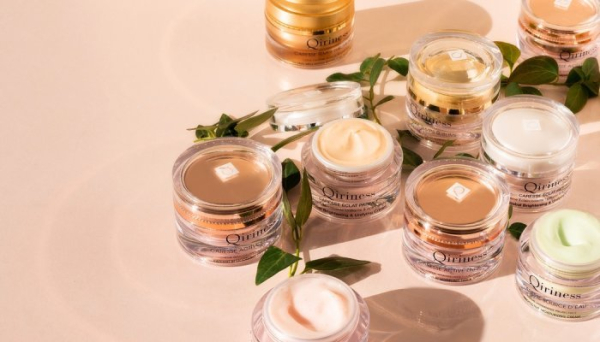
Appreciated in the perfume and cosmetics industry for its aesthetic and mechanical qualities for creating moulded and injected parts, such as bottle caps and make-up cases, zamak has not yet been widely recognised for its recyclability and durability. TNT Group, Metapack and PVL Beauté, major players in the transformation of this alloy, joined by the designer Alnoor Mitha de Bharat (Objets de convoitises), have come together to provide visitors of Paris Packaging Week with the first concrete answers.
The alloy takes its name (zamak or zamac) from its composition, which is 95% Zinc, a widely available material extracted with low CO2 emissions, and 4% Aluminium, followed by Magnesium and Copper (Kupfer, in German). While often unknown to the general public, zamak is an everyday material used by consumers in a wide range of applications, including the automotive industry, hardware, and tapware. In cosmetics and perfume, it is used to create caps or decorative elements for bottles, appreciated for its resistance and the possibility of creating complex shapes, but also for its cool feel and density, in keeping with the codes of luxury.
A niche recycling sector
Mainly composed of zinc, zamak is – like this widely used metal – endlessly reusable at the end of its life, with no loss of properties. But like all materials, it has to be collected for recycling.
TNT Group, the leading manufacturer of zamak caps for the perfume industry, now wants to accelerate this circularity process. To this end, the manufacturer has joined forces with the REAZN Group, the European leader in recycled zamak. “REAZN buys collected zamak to manufacture recycled zamak. Our products, even galvanised or with a plastic insert, can be easily recycled. So we asked ourselves how we could supply REAZN with zamak caps,” explains Thomas Diezinger, President of TNT Group. With the support of the CEDRE network, which recovers empty perfume bottles from Sephora stores, 5 tonnes of zamak were recovered and transformed into recycled ingots. “With CEDRE, the Nordechets Group generally recovers the glass from the bottles and the alcohol residue, while the rest is incinerated. This time, we were able to add zamak to the collection, and what represented a cost – because we had to manage its disposal – has become a resource that REAZN can exploit,” comments Thomas Diezinger.
The reliability of existing channels
But as we know, not all perfume bottles are returned to the shop to be collected and integrated into specialised recycling channels. For the consumer, the other solution is to place the packaging of the product at the end of its life – including decorative elements and caps – in the appropriate sorting bin. To find out what happens to the zamak parts that end up in the household waste stream, Metapack, a company that also specialises in designing top-of-the-range zamak packaging, boxes, and caps for the beauty industry, set out to track their journey through the sorting centres.
With the help of the Derichbourg company, using Eddy-current testing, the team was able to see that 90% of zamak parts were collected when they were alone in the sorting process, and 77% when they were mixed with other items. It should be noted that the shape and size of the object impact its detection: long items such as sprays are more easily selected and recovered (between 95 and 100%), whereas round objects, which can roll down the conveyors, are only detected at 40%.
“It’s important to note that zamak is well detected in existing channels. This means it can potentially be recycled,” says Annette Der Minassian, CEO of Metapack.
Life cycle analysis
Finally, PVL Beauté, a manufacturer of premium packaging, looked at the data needed to analyse a product’s life cycle with a zamak component. The company found that the environmental impact analysis tools available, Spice by Quantis and Bee by Citeo, lacked the right information, particularly on zamak grades and the associated process. Based on approximate data, the LCA is not representative.
“We aim to help Quantis and Citeo fill in their databases as accurately as possible, to avoid a poor rating by default. This is underway with the organisations concerned, but we are only at the beginning,” says Jean Stanislas Orlowski, CEO of PVL Beauté.
While several unknowns remain, the initial results are more than encouraging. Collected through specialised channels, zamak is easily integrated into recycling channels. In the domestic waste stream, it can be sorted with all non-ferrous metals using eddy currents. It remains to be seen what happens to it next, which will probably vary according to the size and equipment of the sorting centres. Although little known, probably because of the small quantities used in packaging, “this material has remarkable aesthetic and technical qualities for the production of parts with complex shapes,” stresses designer Alnoor Mitha de Bharat.
|
This article was published in our special issue Beauty Packaging Innovation. Full text available here.. |
Portfolio











